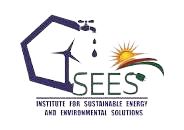 The United Nations Environment Programme (UNEP) launched a set of three studies on efficient lighting, with a special emphasis in the ECOWAS region. These studies are in line with the vision of the ECOWAS Centre for Renewable Energy and Energy Efficiency (ECREEE), which is to ensure the access to energy, with a focus on the use of renewable sources.
The United Nations Environment Programme (UNEP) launched a set of three studies on efficient lighting, with a special emphasis in the ECOWAS region. These studies are in line with the vision of the ECOWAS Centre for Renewable Energy and Energy Efficiency (ECREEE), which is to ensure the access to energy, with a focus on the use of renewable sources.
Light and Livelihood: A Bright Outlook for Employment in the Transition from Fuel-Based Lighting to Electrical Alternatives
This study examines the impact of a market transformation to off-grid lighting in terms of job loss and job creation. It focuses on the Economic Community of West African States (ECOWAS), where 178 million people lack access to the electricity grid. The study provides statistics and introduces policy tools that governments can use to stimulate the production of new, energy efficient lighting technologies and the growth of associated jobs. The study documents that policymakers have tools to increase the pace of job creation, while proactively minimizing any disruption throughout the transition process.
Policy tools include: stimuli for domestic manufacturing or assembly of products; supporting peripheral businesses and services, such as training, recycling, financing, and carbon trading; removing market barriers that slow the uptake of efficient lighting; and, equipping a workforce able to engage in the manufacture, distribution and sale of efficient lighting technologies. Lifting the Darkness on the Price of Light: Assessing the Effect of Fuel Subsidies in the Off-Grid Lighting Market This research explores how subsidies can impede the entry of efficient lighting technologies into off-grid markets. The issue of fuel subsidies is key to understanding the dynamics of the off-grid lighting market.
The research synthesizes and analyses existing information on energy subsidies and off-grid lighting in Economic Community of West African States (ECOWAS) countries. It explores unintended consequences, the prospects for subsidy reform and associated policy strategies for reducing the need for fuel subsidies. The study estimates that current subsidies for kerosene are US$4 billion per year in ECOWAS. Lighting fuel subsidies vary widely in the region; they can impede entry of efficient lighting technologies that were not available when subsidies were originally introduced. Promoting a transition to efficient off-grid lighting is one of the most effective ways of reducing dependence on lighting-fuel subsidies.
The study found a consensus that the most effective approach to mitigating the economic impact of subsidy reform would be to redirect those funds to well-targeted social programs. Additional policy options to facilitate the market for energy efficient lighting include: removing market barriers to efficient alternatives; improved financing; and, relaxing import duties and other taxes on more efficient lighting systems that meet minimum energy and quality standards. Lowering duties can be a very powerful instrument. For example, for every one million dollars of kerosene subsidy reduction, tariffs for 250,000 solar lanterns could be off-set. Combining these two policy actions would be revenue-neutral for the respective government.
Light for Life: Identifying and Reducing the Health and Safety Impacts of Fuel-Based Lighting The 1.3 billion people around the world who earn approximately one dollar per day pay a much higher percentage of their income for low-grade and polluting fuel-based illumination than people who have regular access to electric lighting. This inequity is compounded by adverse health and safety issues including: burns; indoor air pollution; poisoning due to ingestion of kerosene fuel by children; compromised visual health;
